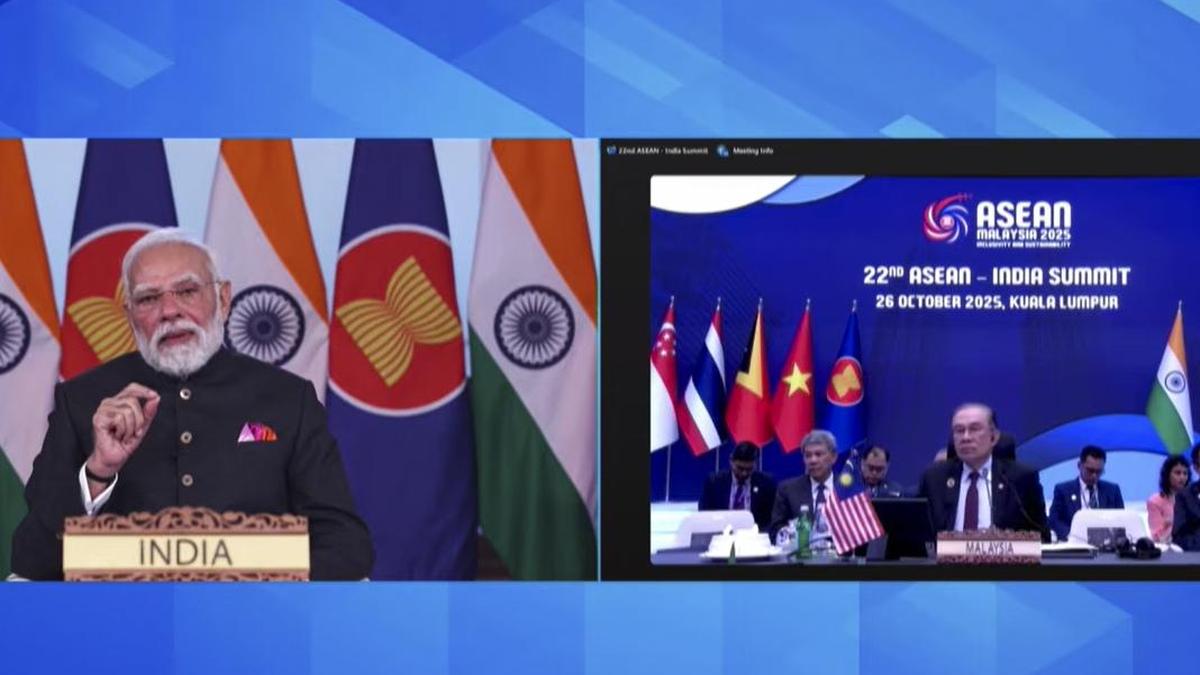29 October 2025 The Hindu Editorial
What to Read in The Hindu Editorial( Topic and Syllabus wise)
Editorial 1: Missed opportunity
Context
India missed an opportunity to leverage the ASEAN Summit more effectively.
Introduction
Since becoming ASEAN’s Dialogue Partner (1995) and a Summit-level participant (2002), India has used the platform to deepen its “Act East” engagement. The ASEAN and East Asia Summits enable India to strengthen regional ties, promote Indo-Pacific stability, and assert its role as a balancing power amid growing geopolitical and economic complexities in Asia.
India–ASEAN Engagement: Overview
- Since 1995:India became a Dialogue Partner of ASEAN.
- 2002:Upgraded to Summit-level partnership.
- The annual ASEAN and East Asia Summitsserve as key platforms for India to engage with Southeast Asia and Indo-Pacific powers.
Strategic Importance
| Aspect | Description |
| Historical ties | Deep civilisational and cultural links between India and Southeast Asia. |
| Geopolitical value | ASEAN central to Indo-Pacific stability; connects India’s “Act East Policy.” |
| East Asia Summit (EAS) | Brings together U.S., China, Russia, Australia, New Zealand, Japan, South Korea, India, and ASEAN. |
| Quad revival (2017) | Australia-India-Japan-U.S. grouping revived on the sidelines of ASEAN Summit after 10 years. |
2025 ASEAN–India Summit Highlights
- Venue:Kuala Lumpur (Virtual address by PM Modi, attended by EAM S. Jaishankar).
- Theme:Strengthening maritime and economic cooperation amid global turbulence.
- PM Modi’s statements:
- Called the 21st century “the century of India and ASEAN.”
- Reaffirmed commitment to ASEAN Unity, ASEAN Centrality, and ASEAN Outlook on Indo-Pacific (AOIP).
- Declared 2026 as the Year of ASEAN–India Maritime Cooperationwith focus on:
- Humanitarian Assistance and Disaster Response (HADR)
- Maritime Security
- Blue Economy
Geopolitical Context
- Global instability marked by:
- S. tariff policiestriggering economic uncertainty.
- China’s export constraintsand market access issues.
- Maritime tensionsin the South China Sea.
- At the East Asia Summit:
- Jaishankar described the times as “complicated.”
- Criticized S. selective principleson energy trade with Russia.
- Raised concerns over China’s supply chain reliability.
- Pushed to finalise the review of the ASEAN–India Trade in Goods Agreement (AITIGA).
Missed Opportunity: PM’s Absence
| Issue | Details |
| PM Modi’s absence | Absent from ASEAN Summit 2025 (also missed 2022). |
| Official reason | Festivities in India; cited by Malaysian PM Anwar Ibrahim. |
| Skepticism | Explanation seen as unconvincing — summit planned months ahead. |
| Alternative reasons suggested | – Campaign commitments (Bihar elections) – Strain with U.S. over trade deal – Malaysia–Pakistan ties (Operation Sindoor context). |
| Perception | Absence viewed as a diplomatic gap when others (U.S., China) attended to signal regional commitment. |
Conclusion
While India reaffirmed its commitment to ASEAN centrality and Indo-Pacific cooperation, Prime Minister Modi’s absence from the 2025 summit weakened its diplomatic impact. In an era where presence signals intent, India must combine consistent participation with policy alignment to sustain its credibility and leadership in the region’s evolving strategic and maritime architecture.
Editorial 2: Relief, rehabilitation
Context
The eastern coastline of India consistently faces the worst impact of cyclonic storms.
Introduction
The Bay of Bengal has long been notorious for spawning devastating cyclones, particularly in October and November. Historical records reveal recurring storms that caused massive loss of life and property along India’s eastern coast. While preparedness and early warning systems have improved remarkably in recent decades, the socio-economic and livelihood impacts of such disasters remain a persistent challenge for coastal communities.
Cyclone Pattern and Historical Context
- Peak Season:
- October–Novemberis historically the most active cyclone period in the Bay of Bengal.
- Historical Records:
- Of 12 major cyclones (18th–20th Century CE), 9occurred during these two months.
- Notable Events:
| Year | Cyclone | Landfall Location | Fatalities (Approx.) |
| 1977 | Severe Cyclone | Near Nizampatnam, Andhra Pradesh | ~10,000 |
| 1999 | Super Cyclone | Near Paradip, Odisha | ~10,000 |
Recent Cyclone: Montha (October 2025)
- Formation:Intensified into a severe cyclonic storm on October 27–28, 2025.
- Impact Regions:
- Odisha, north coastal Andhra Pradesh, and adjoining Tamil Nadu.
- Major Affected Districts:
- Visakhapatnam, Anakapalli, Srikakulam (Andhra Pradesh)
- Ganjam, Gajapati (Odisha)
- Evacuations:
- 10,000+ peopleshifted from low-lying areas of Kakinada and Konaseema (Andhra Pradesh).
- Preparedness Measures:
| State | Key Actions |
| Odisha | Evacuation from vulnerable zones; “Red Alert” in southern districts; NDRF deployment. |
| Andhra Pradesh | Coastal monitoring; shelter and relief camps; emergency food and power supply. |
Improved Disaster Preparedness
- Over the last two decades, Union and State governmentshave significantly improved early-warning systemsand response mechanisms.
- Mass casualtieslike those in 1977 and 1999 have largely been prevented.
- However, economic and livelihood lossescontinue to be severe.
Socio-Economic Impacts
| Impact Type | Description |
| Property Loss | Damage to public infrastructure (roads, power, housing) and private property. |
| Livelihood Impact | Severe loss for fisherfolk, farmers, and daily-wage earners. |
| Animal Losses | Cattle, draught animals, and poultry often perish in large numbers. Example: Cyclone Gaja (2018) led to huge livestock losses in Nagapattinam and Thanjavur. |
Mitigation and Lessons Ahead
- Measures Taken:
- Structural: Cyclone shelters, embankments, improved housing.
- Non-Structural: Forecasting systems, community training, mock drills.
- Key Challenge:Translating preparedness into on-ground efficiency during relief and rehabilitation.
- Role of Leadership:Political leaders must ensure impartial, inclusive support to all affected communities.
Conclusion
India’s cyclone preparedness has evolved remarkably, turning once-fatal storms into more manageable crises. Yet, resilience must extend beyond survival — to restoring livelihoods, animal welfare, and community confidence. Sustained investment in local capacity building and climate adaptation remains crucial to protect vulnerable coastal populations from recurring Bay of Bengal cyclones.
![]()


